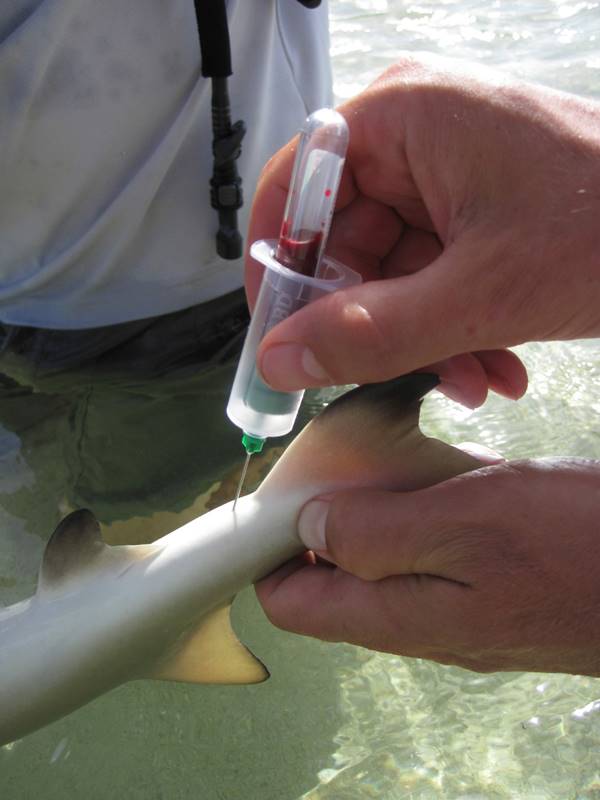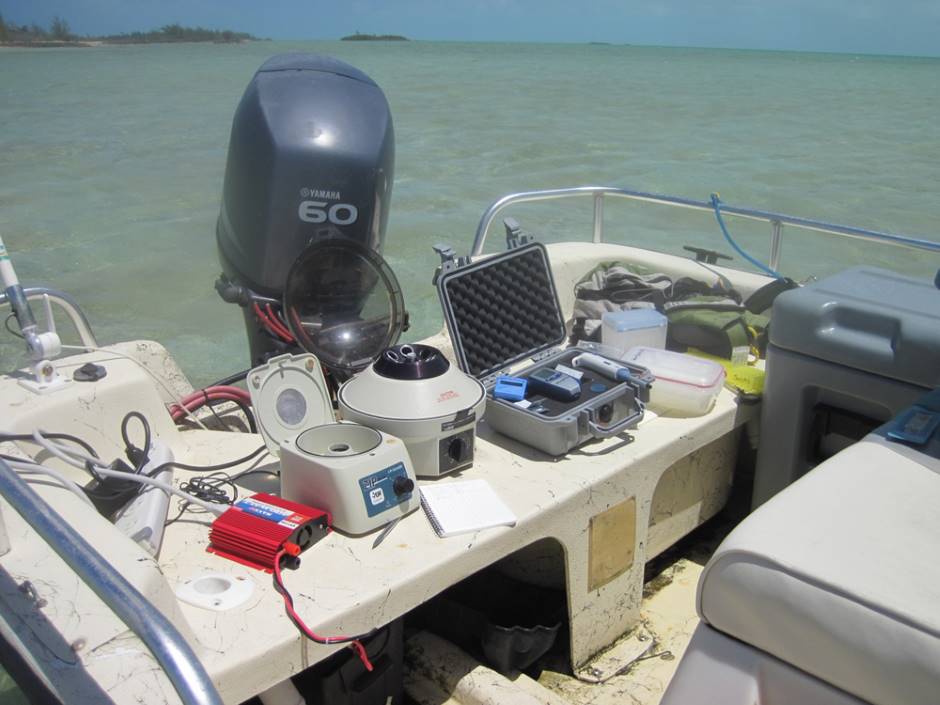Study sees how caught-and-released lemon sharks fare after letting them go
Although many anglers approach a day of fishing with a target species in mind, it can be hard to ignore when another fish is tugging on your line — particularly when that fish is as weird and wonderful as a juvenile lemon shark.
The coasts of Eleuthera in the Bahamas serve as a haven for young lemon sharks, who are at risk of predation in deeper waters. Because of their affinity for near-shore habitats, juvenile lemon sharks are easily targeted by recreational anglers wading the flats or being guided on a skiff. But most anglers don’t realize that the methods used to safely catch and release a bonefish, for example, differ from those appropriate for sharks.
“Science has been showing that the best practices for catch-and-release are very species specific,” said Andy Danylchuk, assistant professor of fish conservation at the University of Massachusetts Amherst.
Danylchuk is the lead author on a study, published in Conservation Physiology, that explores the short-term effects of hooking injury and related stressors on juvenile lemon sharks. He says the shark’s status as an apex predator makes it an important member of the marine ecosystem.
“The overarching goal with my work is to provide good tools to anglers, so that even if they wanted to target juvenile lemon sharks, they would know what the best practices are, and what to avoid doing, to make sportfishing more sustainable,” Danylchuk said.
The only way to determine how catch-and-release impacts sharks, of course, is to catch a few and see what happens. So Danylchuk and a crew of researchers loaded up a skiff with the usual fishing gear plus a few unorthodox components — namely portable blood physiology meters.
Actually hooking the sharks, Danylchuk said, was a straightforward affair. Taking the skiff out to Eleuthera’s tropical flats, the researchers simply waited until a lemon shark swam by, then cast a line toward it. The shallow waters and high visibility awarded the researchers with frequent success. But once they brought the shark to the side of the boat, that’s when the physiology research began.
The researchers “measured every aspect of the angling event,” Danylchuk said, from how long the shark was on the line, to where the shark was hooked. They noted bleeding and tissue damage, then took non-lethal blood samples — capable of revealing otherwise unnoticeable signs of stress — for further analysis back in the States. Before releasing a shark, the researchers would affix a bobber to its dorsal fin, giving them a simple way to observe the movement patterns and behavior of the individual over the next 15 minutes.
Short-term mortality rates turned out to be fairly low. Out of the 32 lemon sharks caught for the study, only four (12.5 percent) died during the subsequent observation period. Two factors that seem to contribute to the risk of death are water temperature and hooking location. High water temperatures, often a feature of outgoing tides from shallow mangrove creeks, test the thermal tolerance of a shark already stressed by capture, and can sometimes “push them over the edge,” Danylchuk said. Lemon sharks hooked in the basihyal, the shark equivalent of a tongue, also show increased vulnerability.
“Even though there’s not a connection between the tongue and the gills, and there was no bleeding, we think [basihyal hooking] may have impacted the ability of the shark to respire,” Danylchuk said.
Between the 32 sharks caught for the study, not a bite of human flesh was had — though Danylchuk noted that the juvenile sharks put up some surprisingly good fights, considering their size. The biggest challenge the researchers faced was trying to keep up with the myriad sharks they had to track.
“It’s always fun trying to handle sharks, even if they’re little,” Danylchuk said. “The biggest thing to remember is to avoid the biting end.”
The study is the first of its kind to focus on the effects of catch and release on juvenile sharks, rather than adults. Danylchuk said he’s still very interested in the fate of hooked adults, but juveniles are more accessible to anglers and researchers alike. In the future, he’s hoping to examine some of the long-term, sublethal effects of catch and release shark angling. Until then, Danylchuk believes a “top-down, bottom-up” approach, in which anglers and fishery managers are educated together, is the best way to preserve these vital creatures.
“Putting this information directly in the hands of the anglers and guides makes a lot of sense,” Danylchuk said. “Sharks are an important part of the ecosystem and we shouldn’t try to kill them.”
“It’s not about saying ‘stop fishing for them,’ it’s about being smarter when we are fishing for them,” he said.





0 comments